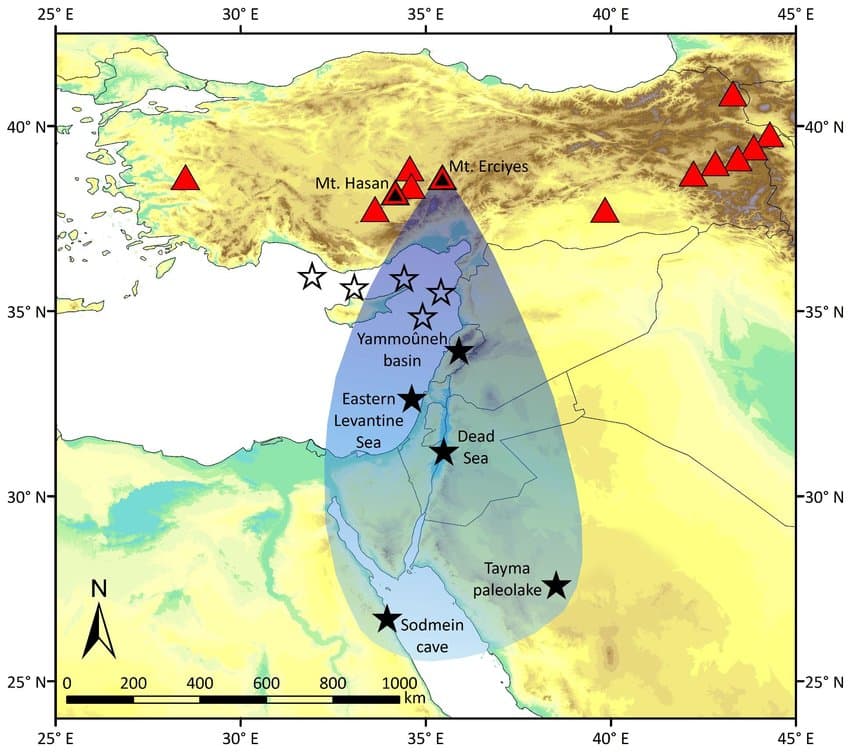What I have never seen YECs explain is the radiocarbon dating. If these layers were created in a single catastrophic event then all of the organic material should have close to the same 14C content. This isn’t what we see. Instead, we see less 14C with depth. In this case, it covers almost 3 half lives meaning the organic material in the deepest layers have 1/8th as much 14C:12C as those towards the top. I can’t see how YEC flood geology can explain this (and a long list of other observations).
Depending on the separation, that itself indicates a longer period of time than YEC can handle since volcanic eruptions are not frequent but are separated by centuries at least. Just guesstimating given the nature of volcanism in the region I’d say that fourteen eruptions indicate a bare minimum of 28k years; it would take examination of the cores to actually assess the time between eruptions, which has clearly been done–
Scanning the paper, the reported separations range from about 0.5 to 5 meters, so that does imply more like millennia of interval years between explosive eruptions, just going by the thickness of those deposits. It is such detailed histories and layered sequences that on their own rule out a single, short term event such as a global flood. It is one thing to contrive some narrative mixing up Noah’s Flood with volcanoes, it is another to repeat that trick fourteen times.
Volcanic Mount Erciyes is today a ski resort in Turkey, but 8900 ya it erupted, and is thought to have spread what is referenced as S1, and possible other identified tephra. This provides a synchronization time stamping various locations together, to the south of the volcano. There is agreement between combined U-Th-Pb and (U-Th)/He zircon dating of lava domes and pyroclastic material, and carbon dated tephra deposits, placing the eruption at about 9 kya.
Holocene Silicic Volcanism at Mt. Erciyes, Central Anatolia, Turkey
One of those tephra deposits is the Biblical Dead Sea, which provided the most precise dating location.
We present new age estimates of the S1 tephra based on radiocarbon dating of terrestrial plant remains and pollen concentrates revealing ages of 8939 ± 83 cal yr BP in the Dead Sea sediments
The Dead Sea, located in one of Earth’s most active rifts, has a well studied, literally in depth, and dynamic histories. Joel Duff has put together an extended video series exploring different aspects of Dead Sea geology and their multifaceted challenges confronting YEC. As is usually the case, there are both specific events which predate the YEC timeline, along with a deep prehistory involving processes involving geological time.
This topic was automatically closed 6 days after the last reply. New replies are no longer allowed.
